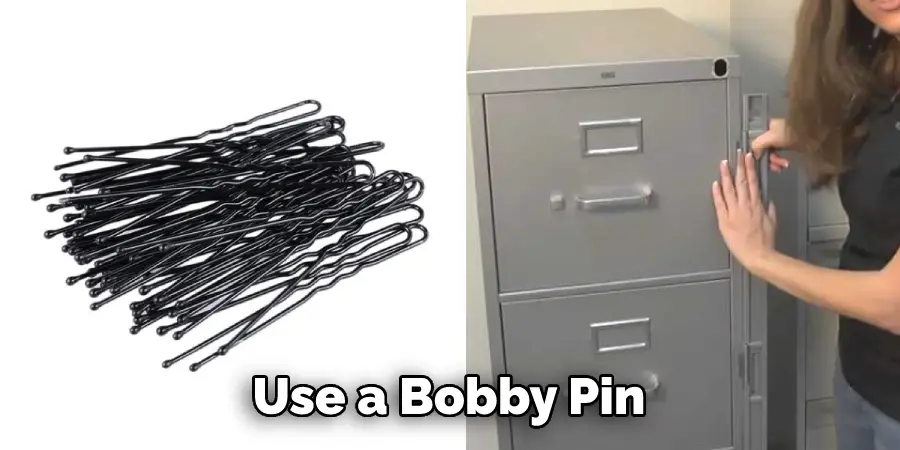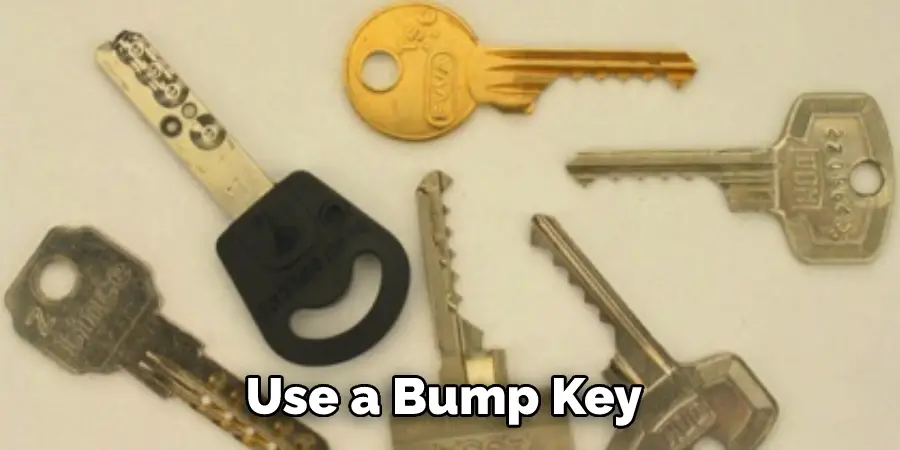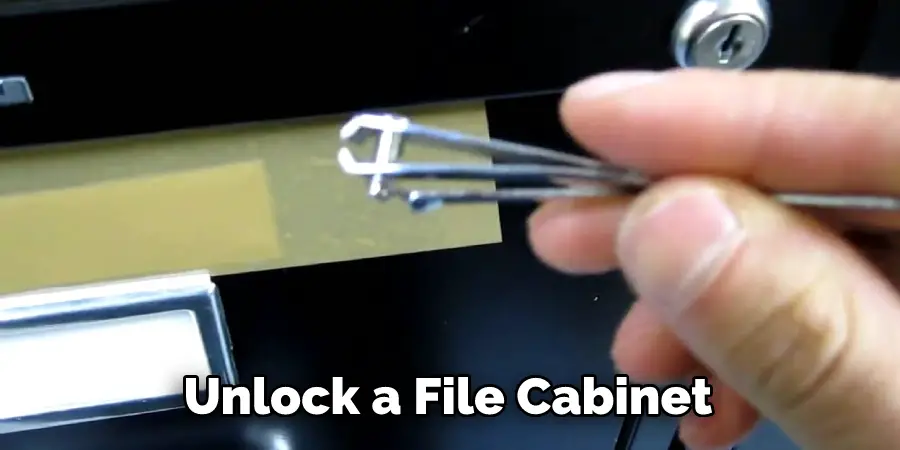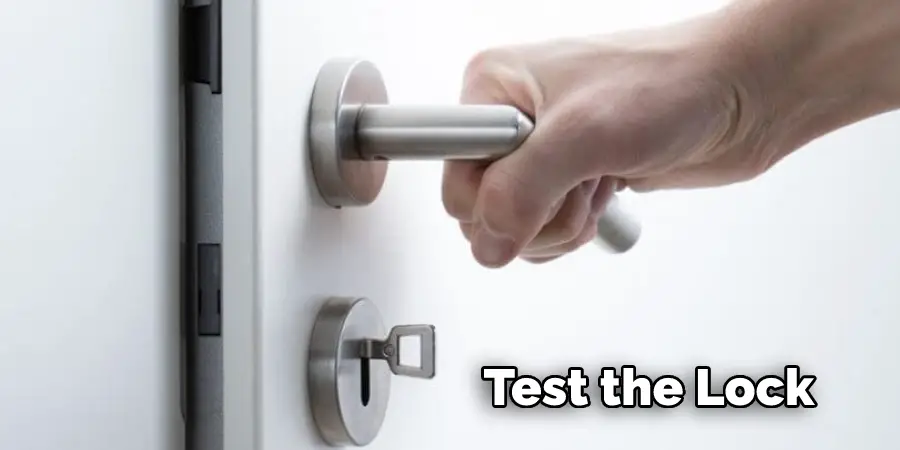Most people think that a file cabinet is locked once they close the drawer. This, however, is not always the case. Many file cabinets can be easily unlocked by following a few simple steps. If you’ve ever found yourself locked out of a file cabinet, you know how frustrating it can be. Luckily, there are a few ways to unlock a file cabinet without the key.

This blog post will show you how to unlock a file cabinet without a key. We’ll also give you some tips on keeping your cabinets secure. So, whether you’ve lost your key or want to be prepared in case it happens, read on for our tips on unlocking file cabinets.
10 Effective Ways on How to Unlock a File Cabinet:
1. Using a Paperclip:
This is one of the easiest and most common ways to unlock a file cabinet. All you need is a paperclip! Straighten out the paperclip and insert it into the keyhole. Then, turn the paperclip until you feel the mechanism click. This should open up the lock. If you don’t have a paperclip on hand, a bobby pin or hairpin will work just as well.
2. Using a Knife:
If you don’t have a paperclip or bobby pin, a knife can also be used to unlock a file cabinet. Just insert the knife’s blade into the keyhole and turn it until the lock opens. Be careful not to damage the lock with the knife, though.
3. Using a Screwdriver:
If you have a small screwdriver on hand, you can use it to unlock a file cabinet. Just insert the screwdriver’s tip into the keyhole and turn it until the lock clicks open. Be careful not to damage the lock, though. If you are planning on using this method, it’s best to use a padded grip screwdriver to minimize the risk of damage.
4. Bumping the Lock:
If you don’t have a key and you can’t pick the lock, there’s still one more thing you can try. You can “bump” the lock open with a small tool, like a screwdriver or bobby pin. Just insert the tool into the keyhole and tap it with a hammer. This will cause the pins in the lock to become misaligned, allowing you to open the lock. Be careful not to damage the lock with this method, though.

5. Use a Bobby Pin:
If you have a bobby pin, you can use it to unlock a file cabinet without a key. Just insert the bobby pin into the keyhole and turn it until you feel the mechanism click. This should open up the lock. If you don’t have a bobby pin, a paperclip or hairpin will work as well. You can also use a screwdriver if you want, but be careful not to damage the lock.
6. Using a Hairpin:
If you have a hairpin, you can use that to try and pick the lock. Just insert the hairpin into the keyhole and wiggle it around until you feel the tumblers click into place. Then, turn the handle and see if the cabinet opens. If not, try another hairpin or another method. You can also use a paperclip if you don’t have a hairpin.
7. Use a Bump Key:
A bump key is a type of lock-picking tool that is designed to open file cabinets. Insert it into the keyhole and tap it with a hammer to use a bump key. This will cause the pins in the lock to become misaligned, allowing you to open the lock. Be careful not to damage the lock with this method, though.
8. Use a Lock Pick:
A lock pick is a thin piece of metal inserted into the keyhole to Manipulate the tumblers inside the lock so that it can be opened without a key. For example, to unlock the file cabinet, Insert the tension wrench into the bottom of the keyhole and apply pressure to the wrench while simultaneously picking at the tumblers with the lock pick.
9. Use a Slim Jim:
A slim jim is a thin piece of metal that can be inserted into the space between a door and its frame, allowing you to manipulate the lock from the inside. This method is most often used by locksmiths and is generally considered the best way to unlock a file cabinet without a key. To use a slim jim, insert it into the space between the door and the frame and hook it onto the lock mechanism. Then, push or pull on the slim jim to engage the lock and open the door.

10. Calling a Locksmith:
If you can’t unlock the file cabinet with any of the above methods, your last resort is to call a locksmith. A locksmith will be able to open the cabinet for you, but it will likely cost you a bit of money. If you’re in a bind and need to get into the cabinet, a locksmith is your best bet. Be sure to ask for an estimate before you have the locksmith come out, so you know how much it will cost.
Step by Step Procedure: How to Unlock a File Cabinet
Step 1: Insert the Bobby Pin or Paperclip Into the Keyhole.
If you have a bobby pin, insert the straight end of it into the keyhole. If you have a paperclip, unbend it to have a straight piece of metal, and insert that into the keyhole. To have a better chance of success, use a bobby pin if you have one.
Step 2: Push and Turn.
Once the bobby pin or paperclip is inserted into the keyhole, push it in slightly, and turn it clockwise or counterclockwise. You may need to wiggle it a bit to find the sweet spot. You should feel resistance when you reach the sweet spot.
Step 3: Apply Pressure and Turn the Handle.
Now that you’ve found the sweet spot apply pressure with the bobby pin or paperclip while turning the handle. The locking mechanism should give way, and you’ll be able to open the cabinet. If you can’t find the sweet spot or the lock won’t budge, try jiggling the bobby pin or paperclip while you apply pressure and turn the handle. You may need to use a little force to open the cabinet, so don’t be afraid to give it a good tug.

Step 4: Remove the Bobby Pin or Paperclip.
Once you’ve unlocked the cabinet, remove the bobby pin or paperclip from the keyhole and put it back in your pocket. You can now open the cabinet and access its contents. If you don’t have a bobby pin or paperclip, you can use a straightened paperclip, a hairpin, or a small screwdriver.
Step 5: Close the Cabinet.
When you’re finished using the cabinet’s contents, close it and relock it by inserting the bobby pin or paperclip back into the keyhole and turning it clockwise. This will ensure that the cabinet stays locked until you’re ready to use it again.
Step 6: Remove the Pick.
Once the cabinet is locked, remove the pick by gently pulling it out of the keyhole. Be careful not to damage the lock as you remove the pick. If done correctly, there should be no visible damage to the lock.
Step 7: Test the Lock.
To make sure that the lock is working properly, try locking and unlocking the cabinet a few times. If the cabinet does not lock or unlock properly, you may need to adjust the tension on the pins. To do this, insert the pick into the keyhole and apply pressure to the pins. If the cabinet still does not lock or unlock properly, you may need to replace the lock.
Additional Tips & Advice:
Here we have given tips on how to unlock a file cabinet.
1. If you’re having trouble inserting the bobby pin or paperclip into the keyhole, try using a small amount of lubricant, such as WD-40. This will help the bobby pin or paperclip slide into the keyhole more easily.
2. If you’re still having trouble opening the cabinet, try using a tension wrench. A tension wrench is a small, L-shaped tool inserted into the keyhole and the pick. The tension wrench is used to apply pressure to the pins, making it easier to manipulate them and open the lock.
3. If you don’t have a bobby pin or paperclip, you can use a straightened paperclip or a small screwdriver.
4. Make sure you’ve inserted the bobby pin or paperclip into the keyhole in the correct direction. The bobby pin or paperclip should be inserted into the bottom of the keyhole, with the curved end facing up.

5. If you’re still having trouble opening the cabinet, try contacting a locksmith. They will be able to help you open the cabinet without damaging it.
Conclusion
If you find yourself in a situation where you need to unlock a file cabinet but don’t have the key, there are a few methods that you can try. Each of these methods has its own set of pros and cons, so it’s important to choose the right one for the job.
Hopefully, this article has given you a better understanding of how to unlock a file cabinet and that you feel confident enough to try one or more of these methods if the need arises. Have you tried any of these techniques? Let us know how they worked for you!
You can check it out to Cover Electrical Cords on the Floor
